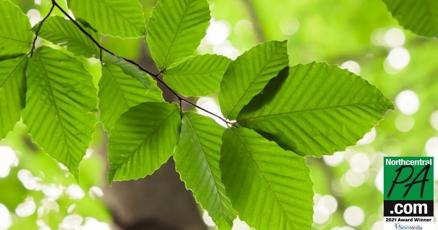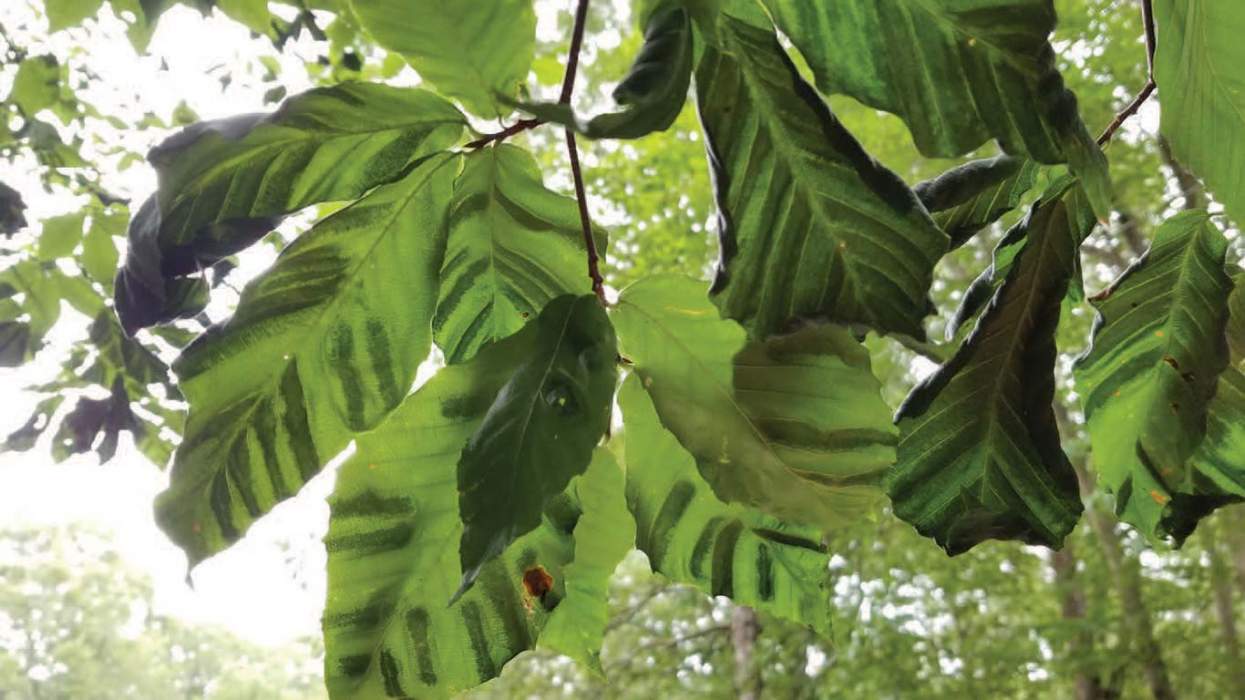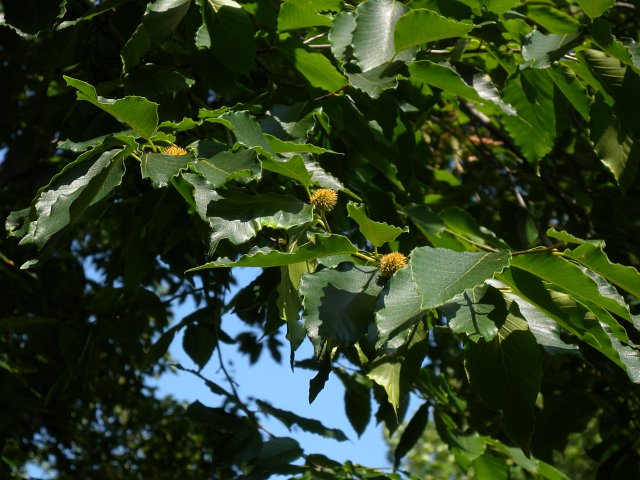blue beech tree facts
American hornbeam also known as musclewood or blue beech is a small slow-growing understory tree native to hardwood forests of the eastern US and Canada. The attributes of this slow growing native tree have given rise to many common names.

Blue Beech Plant It Wild Native Michigan Plants
9 rows American hornbeam blue beech musclewood ironwood water beech.
. In early spring yellow-green male and fuzzy yellow-green female flowers mature. The blue beech produces both male and female. The leaves are alternate with a doubly toothed margin and turn an attractive orange-red color in the fall.
The Blue Beech is botanically called. What Are Some Uses For Beech Trees. The American beech is not a tree you plant for fast growth and quick shade this slow grower is planted for.
European beech tree bark. Beech can reach from 15 to 50 meters 50 to 164 feet in height depending on the species. Some exceptions have been noted to this observation.
The Tree is a deciduous tree it will be up to 20 m 66 ft high. Blue Beech Carpinus caroliniana subsp. The simple ovate-elliptic leaves measure 6 15 cm long and wide.
The blue beech tree has several unique features which are mentioned below. The male flower is a yellow-green flower. Magnificent as solitary specimen trees beeches Fagus spp are large deciduous plants admired for their shape and foliage.
The blue beech also known as musclewood and American hornbeam is a small shrubby tree with one or more trunks. It was named after its green - bluish leaves. The leaves are and the flowers are.
Ontario Tree Atlas map of non-planted Blue Beech. Blue beech may also be known as musclewood for its muscle-like ridges on the smooth-gray trunks and if often confused as a small beech tree. It is a beautiful tree that creates ample shade.
Blue beech is also referred to as American hornbeam or musclewood. The muscular look of the musclewood tree is matched by the strength of its wood. A blue beech tree is short typically averaging around 20 to 35 feet and has a spread of similar size.
The trees most remarkable attribute is its smooth bluish-gray fluted almost muscle-like trunk and larger. The beech tree is a sturdy and imposing tree with a short trunk and wide-spreading crown. The blue beech is often called the musclewood tree because of the smooth muscle-like appearance of its bark.
The blue beech also known as musclewood and American hornbeam is a small shrubby tree with one or more trunks. Blue Beech also commonly known as American Hornbeam is a very small tree but the extremely dense and hardy wood is so strong and difficult to crack that early pioneers used it to make bowls and plates. The leaves are elliptical in shape and have doubly serrated margins.
Because this tree very rarely reaches sawlog size it is seldom seen or treated as. There is no serration along the leafs wavy edges. In autumn the leaves turn golden yellow and orange.
The Blue Beech does well in shady moist areas and can make up a large part of the understory in some forests partially due to the unpalatable. This tree has distinct flares on the trunk and branches that resemble muscle definition. Prefers moist and can tolerate seasonal flooding.
A understory species of moist lowland forests it is a small-statured tree whose crown is easily lost in the lower canopy and its tendency for multiple stems even small colonies from root suckers can give it a shrub. Blue beech is widespread throughout Illinois in. The Tree is a deciduous tree it will be high.
The Blue birch is native to the northeast of North America. The tallest blue beech tree was recorded to be 75 feet tall with 216 inches in diameter at the breast. The beech tree leaves are dark green in summer and turn to hues of red burgundy copper and yellow in the fall.
Virginiana Other Common Names. Its common name hornbeam is a reference to its unusual strength with horn denoting the horn-like toughness of its wood and beam being an Old English word for tree. Up to 8 m tall.
Blue beech also called American hornbeam or musclewood is medium-sized slow growing tree native to Eastern North America including the eastern edge of Minnesota. Its leaves are a bluish green hence the name. What it looks like.
The small nuts are surrounded by a leaf-like bract becoming brown in late fall and hanging in clusters. The leaf shape and the arrangement of the leaves makes it a decorative garden tree. This medium sized tree may grow slowly 20 to 30 to feet tall and 20 to 35 feet wide.
When it comes to variety the European beech Fagus sylvatica comprises many forms and selections of heightened beauty and ornamental value for gardens. The formal and stately American beech holds a special place in many hearts. It is a versatile tree often used in parks golf courses acreages and the forestry industry.
It is found in north-facing bluffs rich woods at bases of bluffs rocky slopes along streams ravine bottoms low wooded valleys and moist woodlands. The tree is perhaps best known for its smooth and sinewy steel-gray bark and the muscle-like look of its maturing trunk and larger branches thus one of its common names. The veins in the leaves are straight and nearly parallel.
It has a lifespan of 150 to 400 years depending on the species. Musclewood This medium sized understory tree is a great native for a shaded mesic to dry place in the landscape. Leaves are dark green oval and serrated and change to colorful tones of orange red and yellow in the fall.
I have seen this tree growing in upland slopes in deep shade under mature hemlocks in Ontario and in field edges and understories in north central Wisconsin along with White Oak. Leaves are arranged alternately on dark gray branches. It is also known as the American Hornbeam or Charme de Caroline in French.
The leaves are ovoid and the flowers are yellow. Leaves are bluish-green with fine teeth and becoming successively larger along the shoots. The tree likes at the location and the soil should be.
While distributed throughout much of Minnesotas eastern deciduous forests Blue Beech is by no means frequently encountered or perhaps more so not readily recognized. The beech is one of the most commonly used ornamental trees throughout the world. It is an understory tree that rarely grows much higher than 20 feet in the wild and often grows in clumps of several trunks.
The crown is rounded and the trunk is often short and crooked. It is a small tree 20 to 40 feet tall with a trunk diameter of up to two feet. The wide-spreading canopy provides great shade in the summer and beautiful bronze coloring in the fall.
Blue Beech - Carpinus caroliniana. European beech is best grown in USDA Hardiness Zones 5 through 7.

What Is An American Beech Tree Types And Uses Home Stratosphere

Beech Tree Branch Plant Leaves Tree Mural Beech Tree

American Beech Knowledgebase Johnson S Nursery

Beech Tree Scientific Name S Fagus Grandifolia Abundance Uncommon What Nuts Inner Bark Young Leaves How Beech Tree Beech Tree Leaves Trees And Shrubs

Dcnr Blog Newly Found Disease Killing American Beech Trees Help Track The Disease Outdoors Northcentralpa Com

American Beech Tree On The Tree Guide At Arborday Org

Beech Tree Pictures Photos Images Facts On Beech Trees Derevo Biotehnologiya Les
Interesting Facts Beech Trees Just Fun Facts

Beech Fagus Sylvatica British Trees Plant Texture Leaves Amazing Gardens

American Hornbeam Aka Musclewood Or Blue Beech Bark Plant Identification Growing Vegetables Tree

Fagus Grandifolia American Beech Or North American Beech Is The Species Of Beech Tree Native To The Eastern United Sta Plant Leaves Tree Tattoo Garden Plants

Pin On Church Gardens Cemetaries Memorial

American Hornbeam Aka Musclewood Or Blue Beech Plant Leaves Leaves Plants

I Spy Something That Is Blue Leaf Local Enhancement Appreciation Of Forests

Beech Trees Under Attack Spring 2021 Discoveries

Beech Trees In The National Capital Area U S National Park Service

